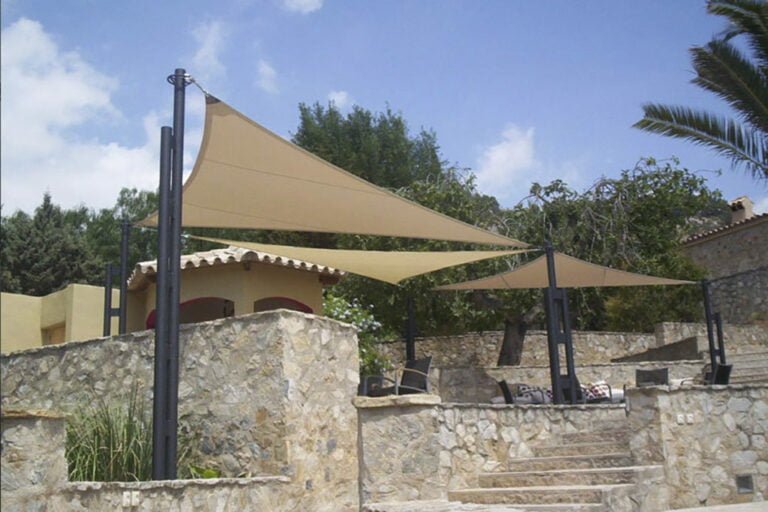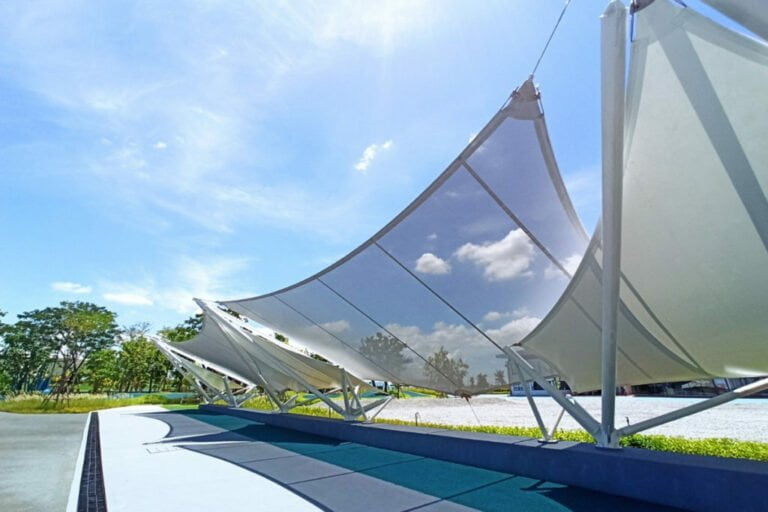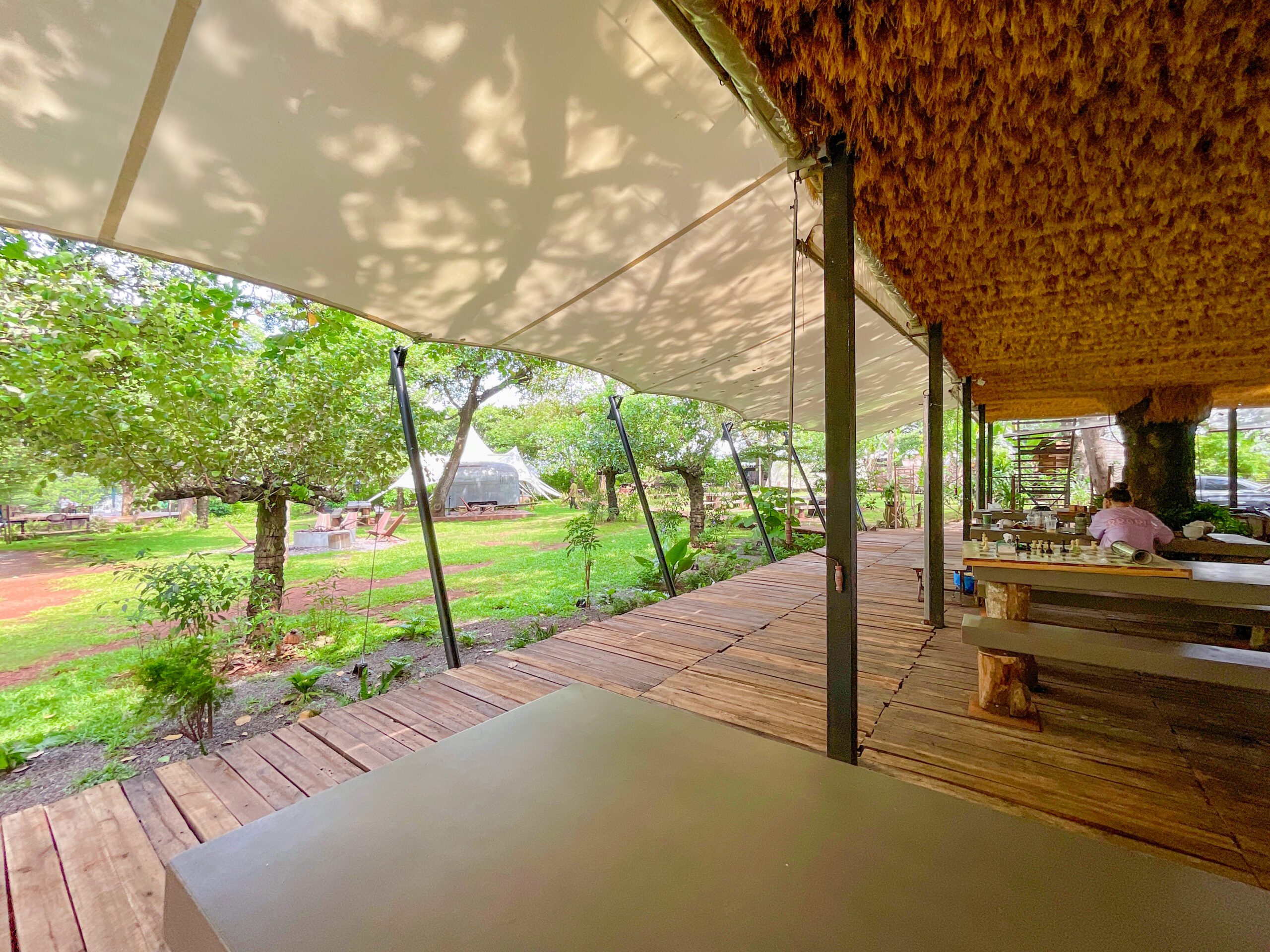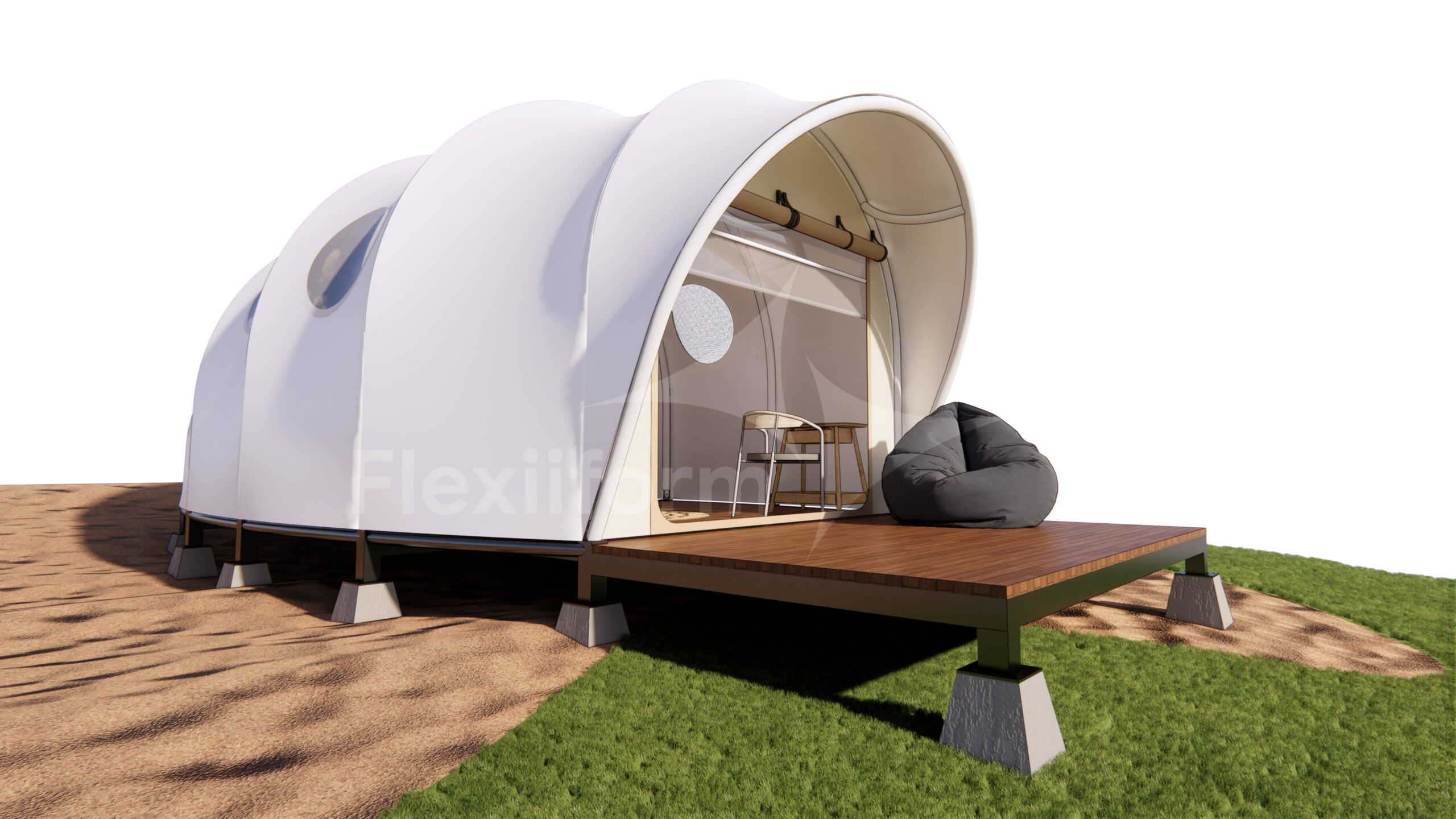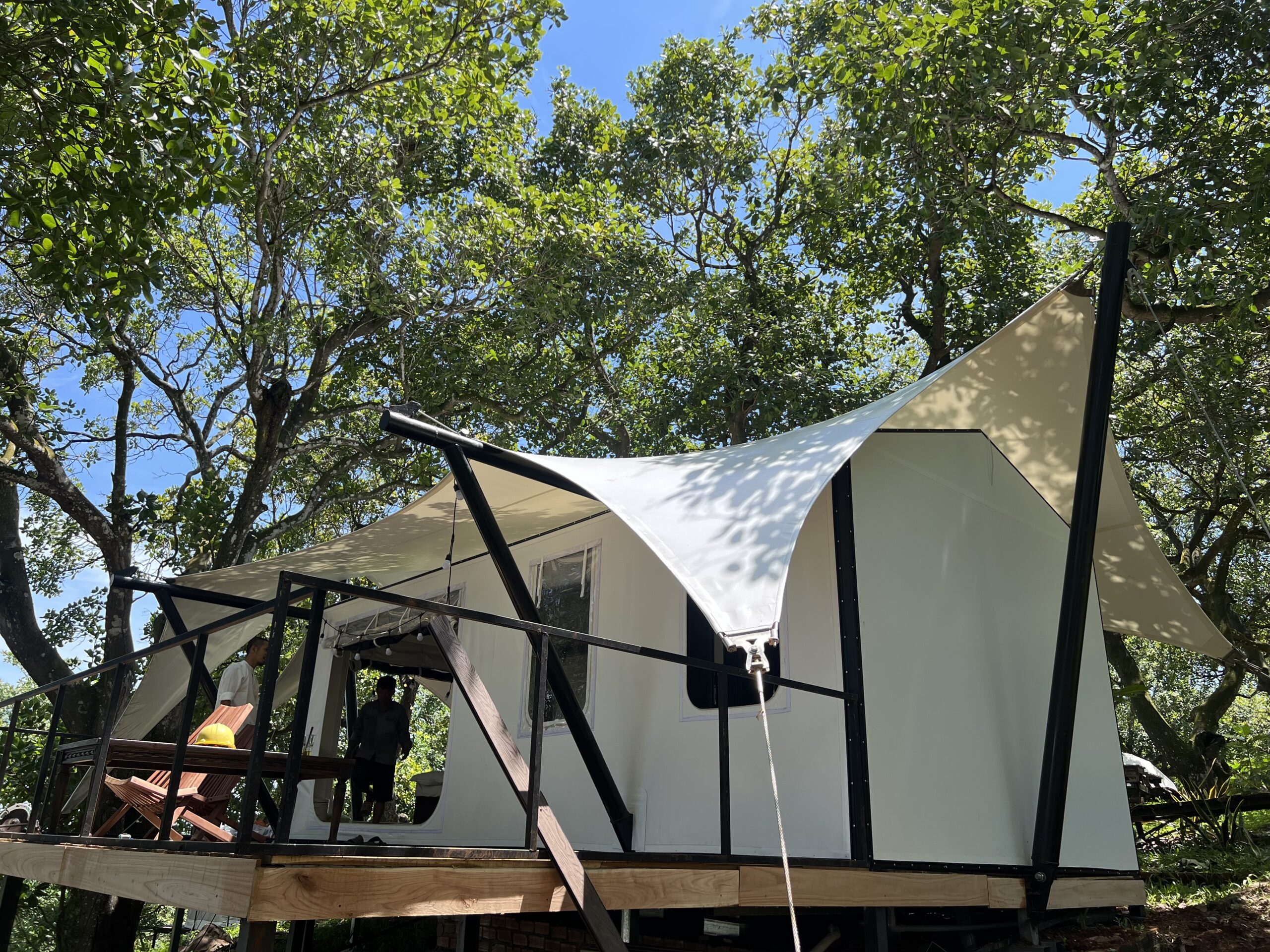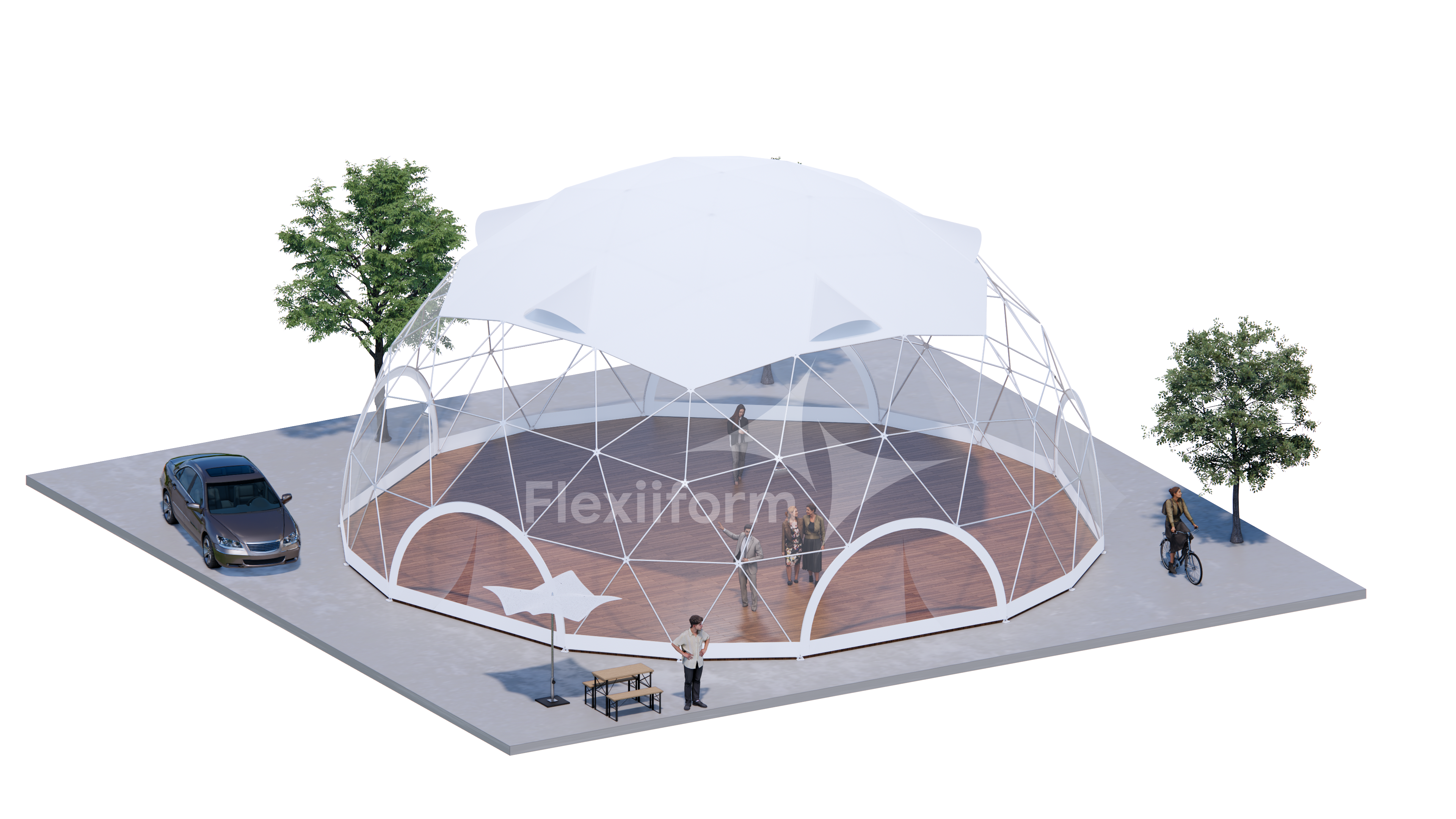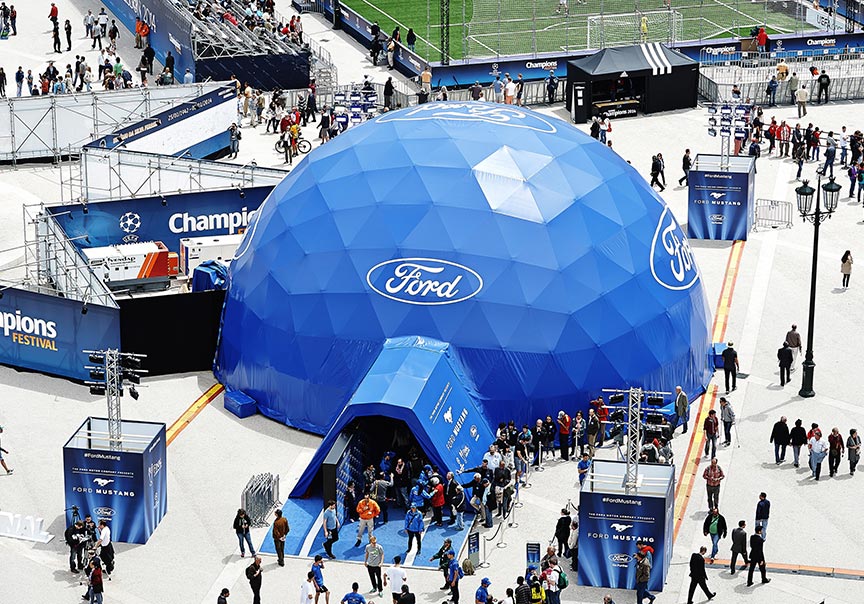Current Situation and Solution: Canvas Sail Awning – Turning Space into Functional Artwork
In the outdoor architecture industry, the need for a covering solution not only ensures optimal sun and rain protection but also brings unique aesthetic and artistic value. Traditional awnings often find it difficult to meet both of these factors in harmony, leading to monotony in design. To solve this challenge, the sail canvas awning has emerged as a perfect choice. This product is designed based on inspiration from sailboats, has a completely different shape and is still quite new in the Vietnamese market, providing large coverage area, ventilation and smooth, wrinkle-free beauty thanks to the structure that takes advantage of the tension of the reinforced canvas.
—
Technical Requirements Analysis & Solution Context
Outdoor structures such as cafes, swimming pools, parks, restaurants, or parking lots require a highly flexible cover solution that can withstand rain and wind loads, while minimizing load-bearing structures to optimize usable space. The technical challenge is how to combine the strength of a metal frame with the flexibility of a stretch canvas, creating unique curved shapes while ensuring durability and safety. In addition, construction must take into account existing factors such as existing structures, trees, terrain, and especially the roof slope to ensure effective drainage and avoid water stagnation on the canvas surface.
—
Technical Solutions
The sail canvas awning is a minimalist awning structure, with a structure including a frame made of high-quality metal and a roof made of modern, convenient, and highly aesthetic canvas.
Structure and Design Principles
The design of the sail canvas is based on the principle of using the tension of the reinforced canvas to stretch, creating a smooth and wrinkle-free feeling. The roof is arranged into high and low points, creating a three-dimensional shape, like a sail stretched in the wind. This structure has a relatively large span, providing a large shade area and creating ventilation for the space below. The sail canvas possesses high flexibility in shaping, can be designed in many different shapes such as square, rectangle, triangle, hexagon or polygon, meeting a variety of covering requirements and allowing architects to freely create. This is a stable and durable roof structure, capable of withstanding large loads from rainwater thanks to the application of modern technical calculation technology to accurately determine the tension required to maintain the structure and create a perfect shape.
Technical Notes on Installation
To optimize the shielding ability and ensure the effectiveness of the sail canvas, it is necessary to note some important technical points during the design and construction process:
- Depending on the current situation: The roof shape must be customized depending on many factors such as existing structures, trees, and terrain. The load-bearing frame system can utilize the structure of existing structures such as concrete beams or columns to minimize material costs for the roof load-bearing structure.
- Roof slope drainage: As it is a roof for outdoor areas, the roof slope must ensure easy drainage of rainwater, avoiding water accumulation. The reasonable slope of the stretched canvas is usually recommended to be no less than 7 degrees from the horizontal plane parallel to the ground. For large structures, roof areas with insufficient slope need to have a suitable drainage solution to avoid water accumulation.
—
Tensioned Canvas Material Suitable for Making Sail Canopies
The sail canopy is suitable for all types of architectural tensile fabric materials because this is the basic, widely used form of span structure. Of these, the two most popular types of tensile fabric are PVC coated Polyester (PVDF) and Poly Tetra Fluoro Ethylene (PTFE) coated glass canvas.
The materials used for tensioned fabric structures today can be classified into two main types:
- Coated canvas: Constructed like a woven fabric and coated with a protective layer on both sides. This material is often used for outdoor canvas structures and large spaces, ensuring comprehensive coverage.
- Mesh: Has a similar structure but the surface has small gaps between the interwoven fibers, allowing light to pass through. This material is widely used for swimming pool roof areas and is mostly used for indoor and outdoor sunshades.

—
Contact Technical Consulting
FlexiiForm is proud to be one of the leading units in Vietnam providing solutions for designing and constructing stretch canvas. The predecessor of FasTech company, FlexiiForm team gathers experts with over 10 years of experience in the industry along with a team of consultants providing solutions according to the requirements for a variety of models and projects at home and abroad. We are committed to providing optimal sail canvas roofing solutions, ensuring superior quality and aesthetics. To learn more about service and product information, customers please contact FlexiiForm directly by phone number +84 867 868 830 or visit Fanpage FlexiiForm and Website FlexiiForm.


